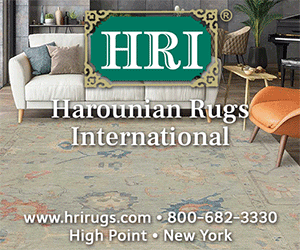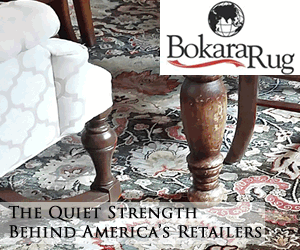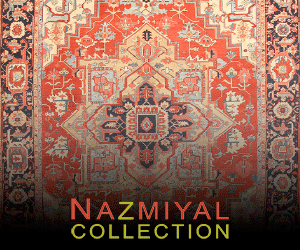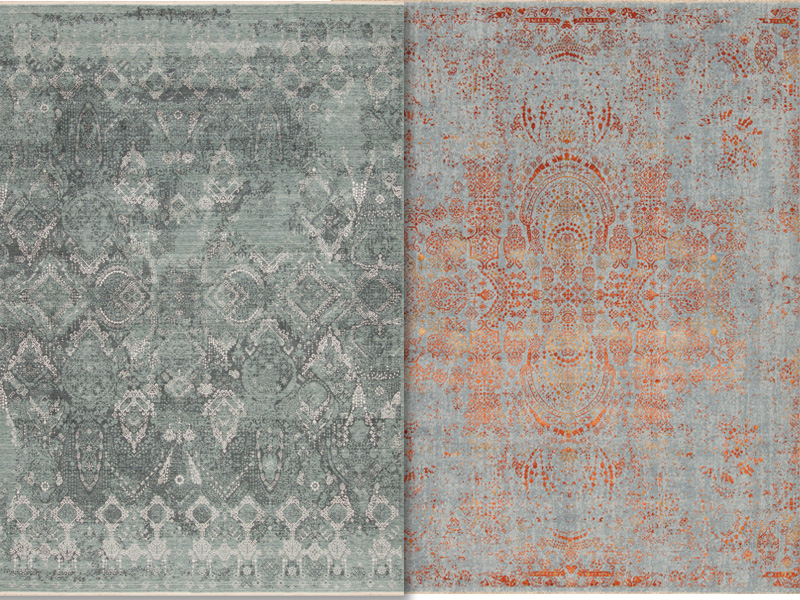Exclusive and unique, Samad’s Nirvana collection elevates the aesthetics of machine-made rugs to heights nearing that of some hand-knotted. Rug Insider finds out more.
On first glance the carpets of Samad’s Nirvana collection do not appear to be machine-made in construction—even to experienced rug and carpet professionals. Possessing a soft hand, a comparatively supple handle, and aesthetics comparable to many of the hand-knotted rugs and carpets which currently resonate with consumers, the Nirvana carpets strike a compelling balance between form, function, and price.
“You cannot ignore something that is changing,” said David Samad, President of the eponymous firm renown for its hand-knotted collections.
“You can either be in denial or you can embrace the change and bring your expertise to the process.” As should be apparent, Samad chose the latter in the face of ever-shifting consumer demands for less expensive wares, as well as upward labor prices now pushing hand-knotted back squarely toward the carriage trade.
The result of a years-long research and development regimen, the idea for the collection came from the most unlikely of places. “One of our largest manufacturers in India suggested we experiment with machine-made,” explained Samad. Given the current global dynamics at play and the expertise to be found therein, Samad turned his sights on the Oushak region in Turkey. Well known for its handmade carpet production and skilled artisans that are well-versed in the art of hand finishing, hand washing and hand shearing, Samad sought a manufacturer who could marry the look, texture, and history of hand-knotted with the efficiencies and price point of machine-made.
“We started in 2016 and must have taken six trips to Turkey that first year,” began Samad. “We wanted the Nirvana carpets to look as hand-knotted as possible and so we facilitated a lot of knowledge exchange between our maker in Turkey and our Indian maker.” The resulting carpets succeed in merging elements of hand-knotted—particularly with regard to the processing and dyeing of the wool—into the the workflow of the Wilton looms upon which the Nirvana carpets are woven.
We wanted the Nirvana carpets to look as hand-knotted as possible…
The “secret” of the Nirvana collection, if you will, is not in the looms themselves but rather the integration of two seemingly disparate techniques of rug making. The actual knotting process—while both the most labor intensive and most costly part of hand-knotted rug making—is only one part of a process which includes the all-important finishing. This itself is a multi-step process involving much hand labor. By finishing the Nirvana carpets by hand, Samad preserves the characteristics imbued therein through the use of hand washing, shearing, binding, and fringe detailing. It’s a notable newfound combination of technologies.
Due to current manufacturing restrictions the palette of the Nirvana collection is limited to five colors, but given the current aesthetic demands of consumers, more is often not required. Through the intentional use of special dye techniques as well as careful selection of the designs employed, Samad has created a carpet that feels oddly at home with its hand-knotted cousins. “We initially thought the Nirvana collection would be in conflict with our hand-knotted business, but no!” Samad exclaims. “In fact, it has opened up doors to new clients.”
Broadly speaking, the long-term success of machine-made has been its ability to bring rugs to larger demographic segments. By integrating visually compelling machine-made rugs within their existing hand-knotted offerings, Samad now offers its clientele options for all rooms of their home. The living room may command a stately and important hand-knotted carpet, but the second guest bedroom upstairs? Perhaps a Nirvana carpet satisfies the needs and wants of the client— aesthetically, financially, or otherwise.
“One of our major concerns was avoiding a machine-made carpet that looked too machine-made. Not to degrade those carpets that do, but we wanted to innovate and push the envelope if you will,” said Samad. This is reflective of the same spirit which first brought civilization machine-made rugs more than a century ago and so in pushing the form forward, Samad continues the innovative spirit that has always driven successful businesses. “We’ve been operating in the United States since 1985 with multi-generational ties to the rug industry originating in Persia over a century ago. We had mixed emotions getting involved in the machine-made business but we are seeing a paradigm shift in buying habits. Not only is it unhealthy not to react to change, but it becomes even more essential to lead that change with the vast experience and knowledge we have gained from our handmade business.”
Noted by both this writer and likewise well received by customers, the Nirvana collection “looks good, is priced right, and has charm,” said Samad before adding, “But like anything else, it too will require evolution in order to remain relevant to consumers.”
Samad is eager to stress that the firm remains committed to hand-knotted production and the trading thereof, noting that machine-made is a small portion of the firm’s business at under ten percent. But he speaks realistically of the changing dynamics of carpetry. “The available pool of weavers is shrinking every year, but we believe so long as there are sheep there will always be hand-knotted carpets,” concludes Samad.
Photographs courtesy of Samad





